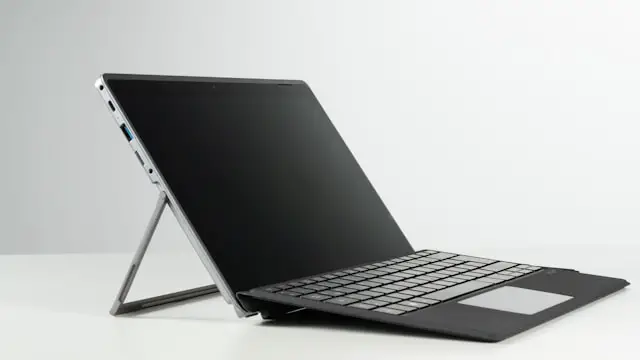Screen capturing, or taking a screenshot, is an essential feature that allows users to capture exactly what’s on their computer screen. Whether you need to save a visual reference, document an error message, or create tutorials, mastering screen capturing is a key skill for both personal and professional use. If you’re using an HP laptop and aren’t sure how to take screenshots, this guide will walk you through several easy methods, from basic keyboard shortcuts to more advanced tools.
In this article, you’ll learn how to capture your screen using built-in Windows features and some popular third-party apps. Additionally, we’ll cover FAQs to help resolve common questions about screen capturing.
Method 1: Using the Print Screen (PrtScn) Key
The Print Screen key (often abbreviated as PrtScn, PrtSc, or PrtScrn) is one of the simplest and most well-known ways to take a screenshot on an HP laptop. It’s quick and built into most keyboards. Here’s how to use it:
1. Capture the Entire Screen
- Press the PrtScn key on your keyboard. This captures the entire screen and copies it to your clipboard.
- Open an image editor, like Microsoft Paint, or a word processor like Microsoft Word.
- Paste the screenshot by pressing Ctrl + V.
- Save the image by clicking File > Save As and choosing the desired file format (e.g., PNG or JPEG).
2. Capture Only the Active Window
If you only need to capture a specific window (like a browser or a program):
- Select the window you want to capture by clicking on it.
- Press Alt + PrtScn. This copies only the active window to your clipboard.
- Paste the screenshot into an editor using Ctrl + V and save the file.
3. Save Screenshots Directly
Instead of copying the screenshot to the clipboard, you can automatically save the image file:
- Press Windows Key + PrtScn. The screen will briefly dim, indicating that a screenshot has been taken.
- The screenshot is automatically saved in your Pictures > Screenshots folder.
Method 2: Using the Snipping Tool
The Snipping Tool is a built-in feature in Windows that allows for more customized screen captures, including the ability to capture specific areas of your screen.
How to Use the Snipping Tool:
- Press the Windows Key and type Snipping Tool in the search bar. Open the tool from the search results.
- Click New to start a new snip.
- Your screen will dim, and you can drag your mouse to select the area you want to capture.
- Once selected, the image will appear in the Snipping Tool window, where you can edit, annotate, or highlight portions of the image.
- Save the snip by selecting File > Save As.
Types of Snips:
- Free-form Snip: Capture a free-drawn shape.
- Rectangular Snip: Capture a rectangular selection.
- Window Snip: Capture a specific window (e.g., a program window).
- Full-screen Snip: Capture the entire screen.
Note: As of Windows 11, the Snipping Tool has been merged with Snip & Sketch, offering a more unified experience.
Method 3: Using Snip & Sketch (Windows 10 and 11)
Snip & Sketch is an enhanced version of the Snipping Tool available on Windows 10 and later versions. It provides better annotation tools and an easier user interface.
How to Use Snip & Sketch:
- Press Windows + Shift + S. The screen will dim, and a toolbar will appear at the top of your screen.
- Select from the available snipping options:
- Rectangular Snip: Capture a rectangular area.
- Freeform Snip: Draw a custom shape around what you want to capture.
- Window Snip: Select and capture an entire window.
- Fullscreen Snip: Capture the entire screen.
- Once you make your selection, the image is copied to your clipboard. You can paste it directly into an app (like Paint or Word) or click the notification that appears to open the screenshot in the Snip & Sketch app for editing.
- Save the file by clicking the Save icon or pressing Ctrl + S.
Method 4: Using the Game Bar (Windows 10 and 11)
The Game Bar is designed primarily for gamers but is also useful for capturing screenshots and recording video. This feature is enabled by default in Windows 10 and 11.
Taking a Screenshot Using Game Bar:
- Press Windows + G to open the Game Bar overlay.
- In the capture window, click the camera icon to take a screenshot. Alternatively, you can use the shortcut Windows + Alt + PrtScn.
- The screenshot will be automatically saved in the Videos > Captures folder.
Screen Recording Using Game Bar:
If you need to record a video of your screen (e.g., for tutorials or presentations):
- Press Windows + G to open the Game Bar.
- Click the Record button (a circle icon) or press Windows + Alt + R to start recording.
- To stop recording, press Windows + Alt + R again or click the Stop button.
- The video will be saved in the Captures folder.
Method 5: Using Third-Party Software
If the built-in Windows tools don’t provide all the features you need, there are several third-party applications that offer advanced screen capturing options, such as scrolling window capture, video recording, and built-in editing tools.
Popular Third-Party Tools:
- Greenshot: A free, lightweight screenshot tool that includes easy-to-use editing features and the ability to capture entire scrolling windows.
- Snagit: A professional-grade tool for capturing both screenshots and videos. Snagit also includes robust editing tools and allows you to capture specific sections of your screen, scrolling pages, and even text.
- Lightshot: A free and simple-to-use tool that lets you quickly capture screenshots, annotate them, and share them online.
FAQs
1. Where are my screenshots saved on an HP laptop?
- Screenshots taken using Windows + PrtScn are saved in the Pictures > Screenshots folder by default.
- For Snip & Sketch and the Snipping Tool, you will need to manually save your snip, and you can choose the destination folder.
2. How can I take a screenshot of just one window?
- To capture only the active window, press Alt + PrtScn. Then, paste the screenshot into an editing tool (like Paint or Word) to save it.
3. Why isn’t my PrtScn key working?
- The PrtScn key may not work if you’re using a keyboard that requires the Function (Fn) key to be pressed simultaneously. Try pressing Fn + PrtScn.
- Another reason could be that a third-party app or shortcut has overridden the PrtScn functionality.
4. Can I capture a scrolling window?
- Unfortunately, the built-in Windows tools (Print Screen, Snipping Tool, Snip & Sketch) don’t allow you to capture scrolling windows. However, third-party tools like Snagit or Greenshot support this feature.
5. Can I take screenshots without using the keyboard?
- Yes, you can use the Snipping Tool or Snip & Sketch to manually click and capture your screen, eliminating the need to rely on keyboard shortcuts.
6. Is there a way to capture screenshots on an HP laptop with Chrome or Firefox extensions?
- Yes, both Chrome and Firefox have several screenshot extensions available, such as Awesome Screenshot and Lightshot. These can be useful if you want to capture and annotate web pages directly from your browser.
Conclusion
Whether you’re capturing a full screen, a specific window, or a custom section of your display, your HP laptop provides several versatile options for taking screenshots. Windows built-in tools like Print Screen, Snip & Sketch, and the Game Bar are easy and effective. For more advanced needs, third-party applications like Greenshot or Snagit provide additional features such as scrolling window capture and video recording.
With this guide, you’re now equipped with all the knowledge you need to capture your screen like a pro. Happy screenshotting!
Featured Photo by Leon Seibert on Unsplash

